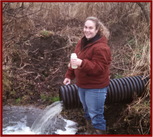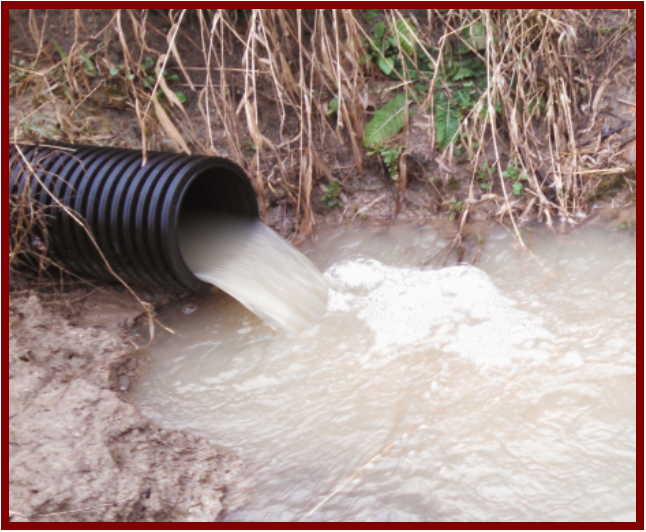Tile Drainage Water Quality Monitoring Project
Western Lake Erie Basin Watershed
Tile Drainage
In the upper Midwest and Great Lake Region, drainage improvement of cropland is a common practice, and much of the most productive ground has been improved with drain tile for subsurface drainage. Indiana and Ohio are among the top 4 states in the US in the area of land with drainage improvement, Michigan also has important drainage areas.
Tile Drainage: 1.) Improves infiltration and reduces runoff. 2.) Increases water storage 3.) Creates a suitable environment for plant growth by removing excess water. Under certain conditions, excess nutrients from commercial fertilizers and livestock manure can quickly move to tile drains through preferential flow paths: cracks in the soil, worm holes, root channels, and other macropores. Critical Issues: 1.) Tri-Sate Region (MI, OH, & IN), tile drains have recently become more of a concern 2.) 2014 study showed that about 50% of Phosphorus losses from an OH watershed were through tile drains. 3.) Tile lines have shown to transport Nitrates and Phosphorus |
Background
A partnership between local farmers, county Farm Bureaus, MAEAP, and MSU Extension; Funded by the NRCS and Michigan Farm Bureau Educational Grant, MFB County Program Funds Grant, MDARD and Lenawee Center for Excellence.
1.) All fields sampled are located in the WLEB 2.) 5 landowners volunteered a total of 5 fields, which include 4 Tiled Crop Fields and 1 CRP field (control) 3.) Samples were analyzed for levels of: Nitrates, Total Phosphorus, Dissolved Reactive Phosphorus (DRP), & Total Suspended Solids. 4.) Samples were taken on a bi-weekly schedule April-June, and after 0.5" rainfall events. |
Purpose of the Project
1.) Educate Farmers on how to accurately test the quality of drainage water coming off of their tiled fields.
2.) Establish a database over multiple years to determine how much, if any, nutrients are leaving via tile lines. |





